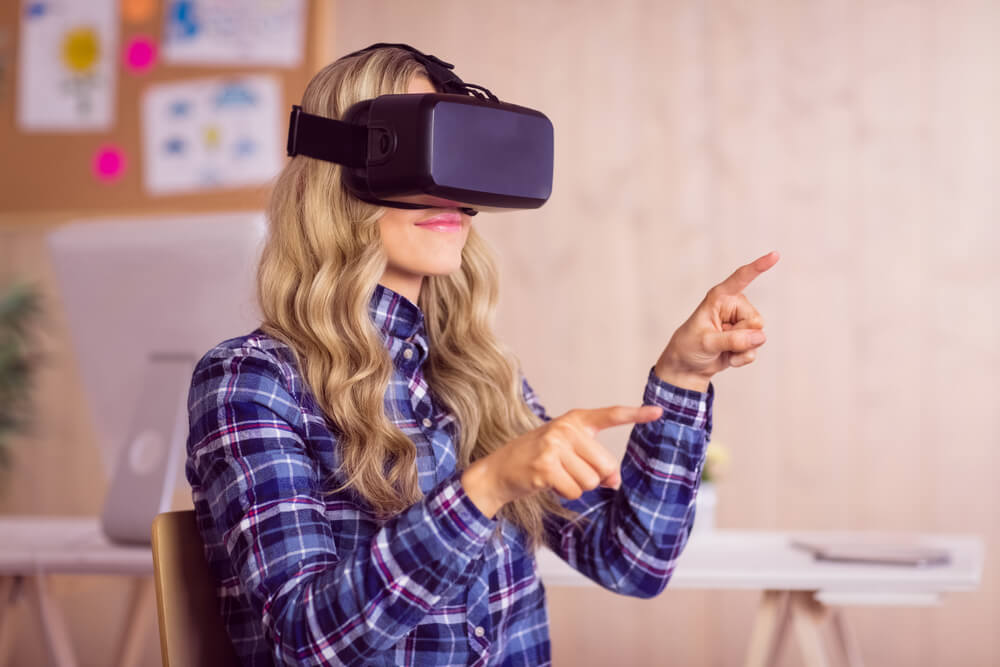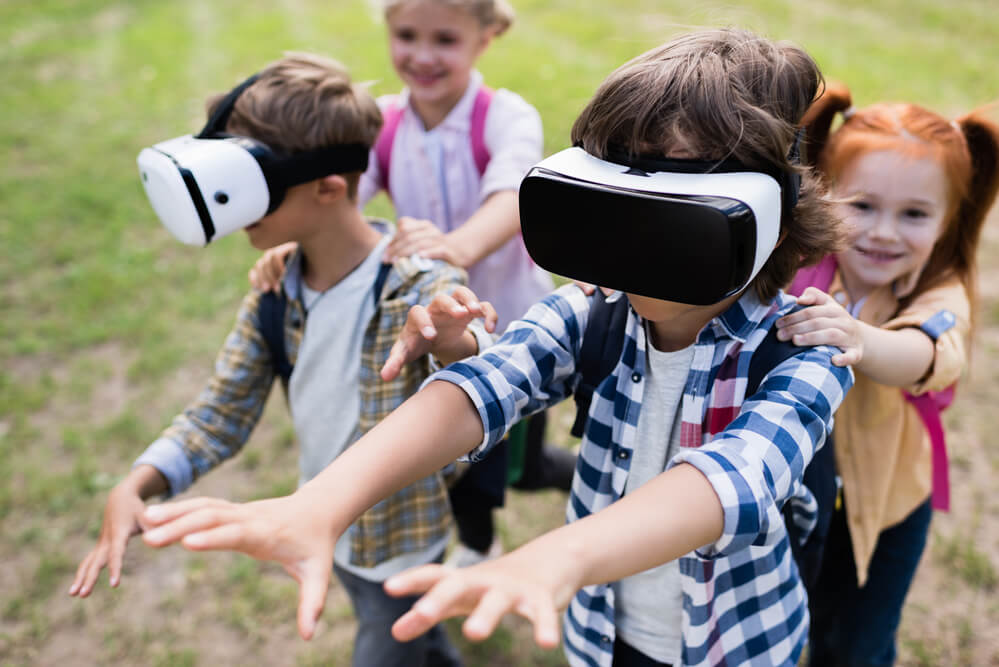Business
How AR and VR are changing EdTech
Here’s why augmented reality and virtual reality are becoming useful tools in the EdTech sector and how educators and students can benefit from them.

Augmented reality (AR) and virtual reality (VR) are no longer the concepts used only in sci-fi movies. In the last few years, both these technologies have significantly evolved to impact real-world applications. These technologies are also proving as promising introduction to the EdTech (Education Technology) sector that’s not only transforming the future of classroom teaching but also the way students learn.
When researchers and professionals in the field of AR/VR focused on bringing the technologies to EdTech, several questions arose in the minds of individuals: How can AR/VR transform the classroom? How can educators use immersive media to teach students and citizens?
As we enter the next generation of media transformation, AR and VR are becoming the hottest topics in education technology. In the coming future, the traditional methods of teaching and learning will become a thing of the past.
In fact, research by EdTechXGlobal reveals that the EdTech spending will reach $252 billion by 2020, growing at a CAGR of 17 percent. Among the EdTech trends, AR and VR are the dominating technologies, as these will open doors to new opportunities for educational institutions.
Before we go deep into understanding the role of augmented reality and virtual reality in EdTech, let’s first briefly know what these technologies actually are.
What is augmented reality?
AR is the technology that brings components of the virtual world to reality and provides an enhanced version of those components to the way users see, hear and feel.
What this means is that the virtual elements are brought to real-world in the form of graphics, sounds and touch. This creates an enhanced user experience and makes users feel like they are surrounded by the virtual environment in reality.
What is virtual reality?
Virtual reality is something that creates an immersive 3D environment and makes the user feel that the virtual world is real. A VR headset is needed to experience the environment that takes the user completely away from actual surroundings.
Roles of augmented reality in EdTech
AR can fulfill several purposes in educational institutions. By making things more engaging and interesting, AR can make it easier for students to acquire, process and learn lessons.
Also, the experiences offered by AR are not limited to any specific age group or level of education. It can be implemented from primary schools to colleges.
Science, humanities and arts are the fields of education where augmented reality is vastly used. Several studies show that the main advantages of AR in education are learning gains, motivation, interaction and collaboration.
• Replace or reduce physical assets
With AR implementation, schools and colleges can make the courses accessible from anywhere at any time. By making the education more accessible and remote, the technology can reduce or replace the number of study materials students need to carry along with them. These materials include textbooks, posters, manuals, physical models, etc.
• No need for special equipment
Today, around 95 percent of teens have access to smartphones, as per Pew Research Center. Since AR doesn’t require any special equipment like VR headset, students can easily access the technology using their mobile devices.
• Positive impact on students
AR can make even the boring lessons of physics and chemistry interesting for students. This technology has the potential to keep them engaged and make the learning of tough subjects and topics fun and effortless.

Augmented reality can make boring school subjects an interesting one for students. (Photo by DepositPhotos)
• More involvement
As mentioned above, the lessons taught using AR can make the students engage more with subjects. This makes them interact and involve more together, and it also contributes to improving their teamwork skills.
• A picture is worth a thousand words
The saying “a picture is worth a thousand words” doesn’t fit better anywhere else than here. Students often find the theoretical chapters boring and less engaging. AR enables them to see everything in action with their own eyes, which speeds up the learning process.
• Professional training
Aside from making theoretical things easy, AR can also help in practical training. For example, high schools can use it for science practical lessons. Medical students can practice surgeries or operations without causing damage to anyone.
• Homework mini lessons
It is a classroom application of AR. When a page of work is scanned by students, a video of teacher opens which helps them solve the problems.
Roles of virtual reality in EdTech
Virtual reality is the most obvious next step to evolve the education technology. The experiences offered by VR can bring the curriculum to life, allowing students to visit the far corners of the world without going out of the classrooms.
VR is mostly used to teach topics of geography, history or literature by providing an immersive experience of place and time. Imagine geography lessons where students can visit all the places worldwide to feel what they read in books.
For instance, students at Mendel Grammar School in Opava City are using VR systems to learn about the anatomy of eyes in their biology classes.
• Encouraging students to learn
When students learn using a VR headset, they are encouraged to fully understand what they are supposed to learn. The mind processes the information without putting much cognitive load.
• Real sense of place
When teachers talk about certain things in the classroom, the students want to experience those things. That is the reason some colleges take their students out for industrial tours. VR breaks the limits of classrooms and helps students explore the things with their eyes and love the subject.
• Virtual laboratories
Using VR technology, education institutes can bring the experience of expensive laboratories to their students without any cost. Apart from labs in schools and colleges, students often want to explore how leading research centers and labs work. This all can be made possible with VR that scales and makes learning more engaging and dynamic.
• Content creation
People often think VR is just for content consumption. However, it can also be used to create the content. Tools like Google’s Tilt Brush let users communicate with their imagination and improve creativity.
Final words
AR and VR are on the doorstep of education, and these technologies will make the classrooms of 21st century technologically advanced. By engaging more students and encouraging them to learn, AR and VR will motivate young and bright students to transform the world of tomorrow.
All these potentials now rely on the decision of educational institutions to adopt these technologies.
(Featured photo by DepositPhotos)
—
DISCLAIMER: This article expresses my own ideas and opinions. Any information I have shared are from sources that I believe to be reliable and accurate. I did not receive any financial compensation for writing this post, nor do I own any shares in any company I’ve mentioned. I encourage any reader to do their own diligent research first before making any investment decisions.

-

 Cannabis2 weeks ago
Cannabis2 weeks agoThe Future of CBD: Innovations and Challenges in Medical Research
-

 Fintech6 days ago
Fintech6 days agoFidoCommercialista Closes a 1.2 Million Euro Round
-

 Africa2 weeks ago
Africa2 weeks agoTraining of Private Sector Actors on the Use of the Digital Platform Started in Burkina
-

 Fintech4 days ago
Fintech4 days agoHow InnoFintech Is Promoting Innovation in the Financial Market


























You must be logged in to post a comment Login